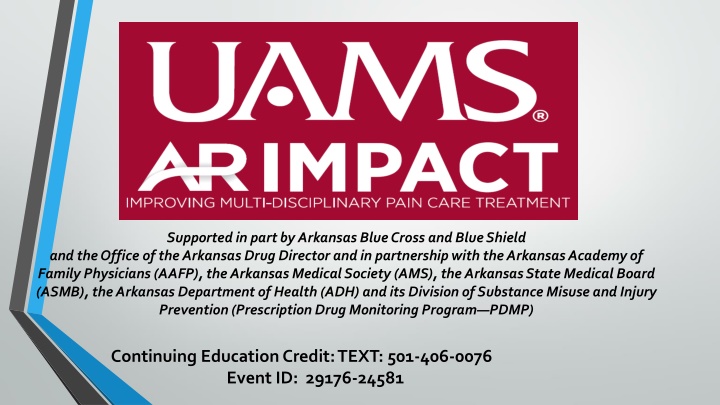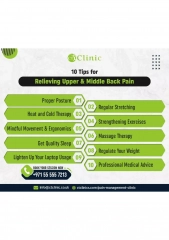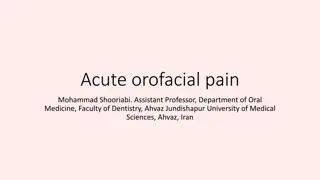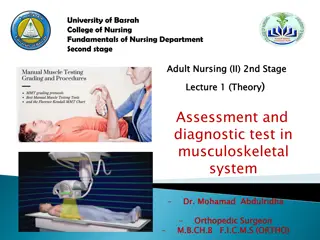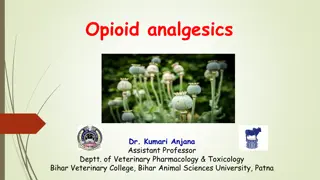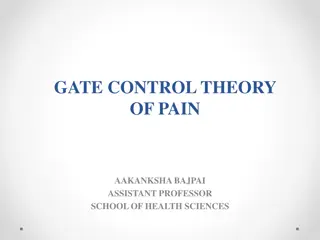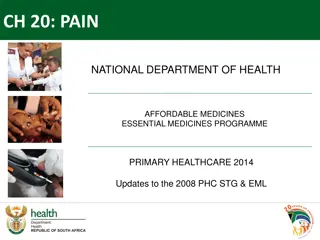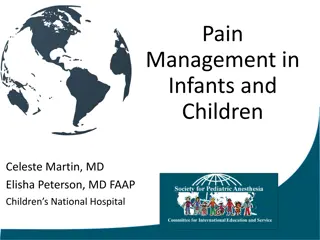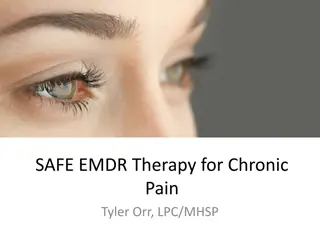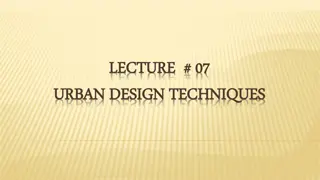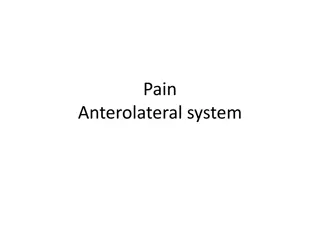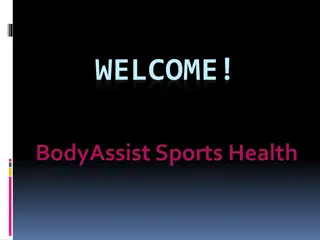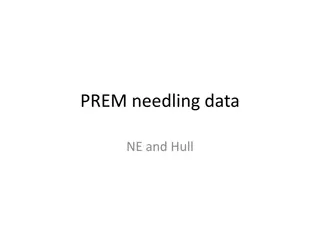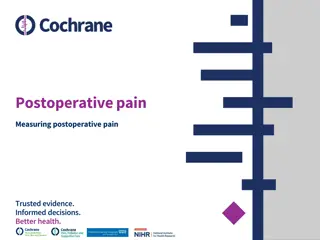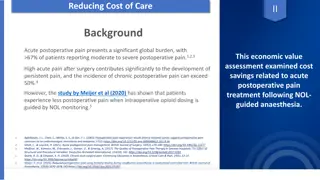Dry Needling: Pain-Relieving Technique and Benefits
Dry needling is a neurophysiological treatment technique using thin filiform needles to address pain and muscle tension by creating changes in the neuromuscular system. Learn about its benefits, mechanisms, and appropriate patient diagnoses from expert Leah Tobey, PT, DPT. Join polls to engage with the topic further.
Download Presentation

Please find below an Image/Link to download the presentation.
The content on the website is provided AS IS for your information and personal use only. It may not be sold, licensed, or shared on other websites without obtaining consent from the author.If you encounter any issues during the download, it is possible that the publisher has removed the file from their server.
You are allowed to download the files provided on this website for personal or commercial use, subject to the condition that they are used lawfully. All files are the property of their respective owners.
The content on the website is provided AS IS for your information and personal use only. It may not be sold, licensed, or shared on other websites without obtaining consent from the author.
E N D
Presentation Transcript
Supported in part by Arkansas Blue Cross and Blue Shield and the Office of the Arkansas Drug Director and in partnership with the Arkansas Academy of Family Physicians (AAFP), the Arkansas Medical Society (AMS), the Arkansas State Medical Board (ASMB), the Arkansas Department of Health (ADH) and its Division of Substance Misuse and Injury Prevention (Prescription Drug Monitoring Program PDMP) Continuing Education Credit: TEXT: 501-406-0076 Event ID: 29176-24581
Dry Needling by Physical Therapists Leah Tobey, PT, DPT, Cert. DN Doctor of Physical Therapy Certified in Dry Needling UAMS Orthopaedics lrtobey@uams.edu
Objectives Define Dry Needling in Physical Therapy Fact or Fiction? Identify Mechanisms of Pain & Dry Needling Mediated Analgesia Identify appropriate patient diagnoses
How to join our poll questions: Grab your cell & open a new text Text the number 22333 In the message line, type LEAHTOBEY999 (not case sensitive)
Dry What? Dry vs. Wet Needling Dry: No medication being used during DN Wet: Lidocaine injection done by MD Best evidenced-based treatments & Best outcomes = + Electrical Stimulation (Internal TENS unit)
Dry Needling is a pain-relieving treatment technique using thin filiform needles. The needles are inserted into areas of hypersensitivity aka knots or taut trigger points and help create an internal, mechanical and chemical change within the tissue and creates a change in a patient s CNS & disrupts to help relieve pain What is DN: Dry Needling?
DN: Dry Needling Technical Definitions The American Academy of Orthopedic Manual Physical Therapists (AAOMPT) states: Dry Needling (DN) is a neurophysiological evidence-based treatment technique that requires effective manual assessment of the neuromuscular system. Physical therapists are well trained to utilize dry needling in conjunction with manual physical therapy interventions. Research supports DN improves pain control, reduces muscle tension, normalizes biochemical and electrical dysfunction of motor end plates, and facilitates an accelerated return to active rehabilitation. The APTA document Description of Dry Needling in Clinical Practice: An Educational Resource Paper. www.apta.org/StateIssues/DryNeedling/ "Dry needling is a skilled intervention that uses a thin filiform needle to penetrate the skin and stimulate underlying myofascial trigger points, muscular, and connective tissues for the management of neuromusculoskeletal pain and movement impairments. [It] is a technique used to treat dysfunctions in skeletal muscle, fascia, and connective tissue, and to diminish persistent peripheral nociceptive input, and reduce or restore impairments in body structure and function, leading to improved activity and participation."
Caveat The integration of symptoms, examination of findings, and the current evidence provide best practice physical therapy for neuromusculoskeletal conditions with the addition of dry needling to a multimodal combined approach. Dry Needling Institute of American Academy of Manipulative Therapy 2012. James Dunning, DPT, MSc Manip Ther, OCS, MCSP, MAACP (UK), FAAOMPT, MMACP (UK). www.osteopractor.com
DN Dry Needling Brief History Dates back to 1940 s with Dr. Janet Travel Identified muscular trigger points and referral patterns that were elicited with Wet Needling Discovered Dry Needling offered the same results = Groundbreaking! Dr. Travel & Dr. David Simon identified most of the trigger points located in the human body. Thus, the first generation of modern Dry Needling was established.
DN Dry Needling Benefits 1. Improve Blood Flow Possibly induce a healing process to the affected tissues Intramuscular DN with Electrical Stimulation 2. Desensitize structures Hypersensitive tissues can be irritable & the treatment can induce discomfort Deactivate taut trigger points 3. Reduce Pain Decreased pain is felt within 24 hours* Endogenous opioids + endorphin release, etc. during mm twitch response Followed by sustained mm relaxation 4. Restore Function & Motion Speeds up healing process; improved mobility is immediate in many cases Tremendously beneficial for quick and tangible results on top of other movement remediations
Anatomy DN Treatment Process Physiology Biomechanics "It's something a PT does in conjunction with determining range of motion, stretching, exercise, posture correction. -Dr. Jan Dommerholt During a 45 session: 10 minutes of DN + 15 minutes of E-Stim with needles + 20 minutes of neuromuscular re-education for ROM, posture, strengthening
Osteoarthritis of L knee: The PT might treat 20 minutes of dry needling with E-Stim. Plus other manual therapies: patellar, tibial/fibular joint mobilizations, stretching and strengthening exercises in addition to the DN. This can jumpstart the healing process with improving blood flow, stimulates collagen, Frequency: 2-3x/wk x 4-6 weeks
Acupuncture Dry Needling Traditional Chinese medicine Use of acupuncture points located near/on the skin s surface Pricking the skin to 1 inch for treatment of various physical, emotional and mental conditions Pain relief via balance of the body s energy/life force, Qi and Meridians (pathways). Aka Myofascial Trigger Point Dry Needling or IMS: Intramuscular Stimulation Technique used to treat myofascial, acute and chronic pain via de-activation of trigger points (MTrPs) Mechano-transduction & chemical changes to CNS Winding, Wind & Holds, Pistoning, E- Stim Used in conjunction with manual therapy, exercise, postural education, stretching. 71% correspondence between MTrPs & acupoints
Who is appropriate for DN: Dry Needling? Patients with acute, chronic or myofascial-type pain who need a Central Nervous System Reboot in conjunction with other PT treatments. Low back pain Sciatica Hamstring tendonitis Hip & Knee OA Hip bursitis Achilles tendonitis Headaches Neck pain Cervical radiculopathy Shoulder pain RC tendonitis
Poll everywhere question: what conditions do you want to know more about related to PT or Dry Needling?
References American Physical Therapy Association Board of Directors. Guidelines: Physical Therapist Scope of Practice (BOD G02-14- 18-12). http://www.apta.org/uploadedFiles/APTAorg/About_Us/Policies/Practice/ScopePractice.pdf. Accessed February 9, 2015. Updated 2018. Guide to Physical Therapist Practice 3.0. Alexandria, VA: American Physical Therapy Association; 2014. http://guidetoptpractice.apta.org/. Accessed February 9, 2015. Updated 2018. American Physical Therapy Association. Physical Therapists & the Performance of Dry Needling. http://www.apta.org/StateIssues/DryNeedling/. Published January 2012. Accessed February 9, 2015. Updated 2018. American Physical Therapy Association. Description of Dry Needling in Clinical Practice. http://www.apta.org/StateIssues/DryNeedling/. Published February 2013. Accessed February 9, 2015. WebMD.com/painmanagement Dr. James Dunning, Dr. Raymond Butts. Dry Needling Institute of American Academy of Manipulative Therapy. www.osteopractor.com
